Chance. A roll of the dice within that casino located in that vast structure of the human mind. The roulette wheel stops, the cards are flipped, the chips rise and fall.Chance is what arises from that volatile unpredictable mix of the social and the psychological. Like the art of Max Ernst, no logic and reasoning cannot be applied to the disjointed postmodern fiction of a Paul Auster. His own stories are Max Ernst narratives; branching out in all directions, without a beginning, middle or end like some structureless ‘rhizome’ that reflects typically postmodern ‘central emptiness under the absent god’. What Auster is today was what Ernst began almost a century ago.
Its the absence of the ultimate divine truth, as absence of an organising center or a frame, giving way to pagan proliferation of the meaning of the text. As a writer of fragments which exist alone ‘with no before or after he disrupts the linear progression of the story and relies on chance to move the plot forward. Thus, complexity opposes earlier linear ordering of cause and effect. Chance is an unpredictable and whimsical goddess, misused in ‘bad’ literature as a device that allows the writer freedom for endless possibilities and combinations.
However, in Auster’s fiction chance is a way of shattering the power of reason and logic as it occurs in his narrative. The unexpected occurs with almost numbing regularity in our lives’, he declares in “The Art of Hunger”. As the improbable exists in reality, the task of the realist writer, as Paul Auster declares in ” The Art of Hunger”, is to use it as a source of imagination and present it in his fiction. But how does this represent itself in the visual art as a representation of the chance encounter. Max Ernst explored some profound regions to arrive at the chance encounter…..
“These are observations that run entirely counter to the first radical phase of Cologne Dada, whose attack on aesthetic conventions placed it closer to Duchamp and Francis Picabia than, say, to the Dadaists in Berlin. This is why, in dealing with Max Ernst’s work, it is impossible to do without the concept of processing, the conscious reworking of existing material. It is pointless to speak of anti-art in this connection, because what we are dealing with, quite objectively, is the genesis of a superb and far-reaching aesthetic. This is the point at which Ernst, the artist, comes on the scene.” ( Werner Spies )
ABOVE: To be remarked is Ernst’s rather camp, even coquettish pose. Sitting on Dostoevsky’s right knee, with a less obviously flirtatious Jean Paulhan perched on the left, he appears to be tweaking the writer’s beard. It would seem Dostoevsky is represented as a parodic father figure for the artist, and Ernst’s seemingly feminine response to such a figure is explicable in terms of the artist’s apparent fascination with a Freudian construct; the notion of the inverted Oedipus complex, involving the male child’s unconscious sexual fantasies surrounding his father….
Max Ernst paralleled the sudden shifts in film images in the Dada collages that made his nane in Paris in the early 1920’s. He also pioneered the idea that modern pictures must be read as well as looked at; his collages were often spiked with long captions that darted in and out of common sense as a lizard darts in and out of rocks. He quickly became as much a master of the French language as he needed to be for his purposes; in the collage poems he wrote jointly with Paul Eluard it is difficult even for a Frenchman to konow which lines are by Eluard and which are by Ernst.
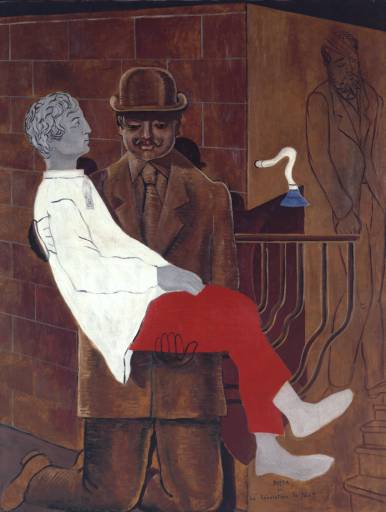
''In 1924 the poet André Breton published the first Manifesto of Surrealism. The primary aim of this literary and artistic movement was, he explained: 'to resolve the previously contradictory conditions of dream and reality into an absolute reality, a super-reality.' Inspired by the psychoanalyst Sigmund Freud's theory of the unconscious, Surrealism used irrational images to portray the working of the human mind. Max Ernst's Pietà or Revolution by Night is typical. ''
ABOVE: In a work of less than a year later, Ernst duplicates the almost same pose of a father figure physically suppressing his son, and clearly alluding to a specific psychoanalytic case history, that of the ”wolf man” .In the ”Rendez-Vous” Ernst’s ”femininity” is further emphasized by a reference to Ingres’s ”Jupiter and Thetis” in which the suppliant Nereid fingers the beard of the unyielding patriarch. The entire composition is also an ironic reworking of Ingres’s ”Apotheosis of Homer” and it is not perhaps, to far fetched, to see th
mall detail as effectively confirming Ernst’s bisexuality….Ernst demanded that the public adjust to changes of pace and to shifts of attention that they had not encountered in art before; and he went on doing this in his two ”collage novels” , ”La Femme 100 Tetes” and ”Une Semaine de Bonte” which are as much a contribution to literature as to art insofar as they adapt the art experience to the experience of the turned page. Once again, no one label will do. To call these books novels is to imply they have a linear story line, which they don’t possess. Still, the experience of sitting in a chair , turning page after page, progressively envelopes one in an atmosphere as distinctive as that created by the stories of Edgar Allan Poe or the adventure novels of Jules Verne.
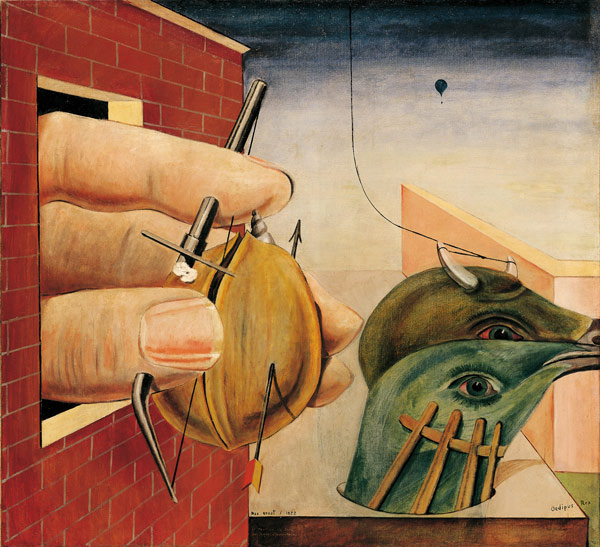
Ernst. oedipus rex. 1922. ''German Dada artist Max Ernst was one of the first to take his inspiration from De Chirico’s teachings, with such masterpieces as Oedipus Rex (1922). Ernst, arguably one of the greatest surrealist artists, explored the opportunities offered by chance and by subconscious automatism ''
The role played by Max Ernst the painter in the art of the 1920’s was intermittent. Perhaps ”inventor” is the best generic name we shall ever find for his activity; for although he has always made paintings that are perfectly straightforward in their technical means, he had also been consistently inventive in that domain. It would be difficult to think of a substance, or of a class of object, that he could not incorporate into a picture if he felt so disposed.
A long spoon, a ready-made bow tie, a plastic lace tablemat, a small string bag, a pair of his own old trousers, and a cardiogram have all been pressed into service. It could have been freakish or gratuitous; but in point of fact these heterogeneous ingredients look as if they had come back to their rightful home after a long period of exile. Art can be everything, as much in the year 201o as in 1918, and everything can be art.
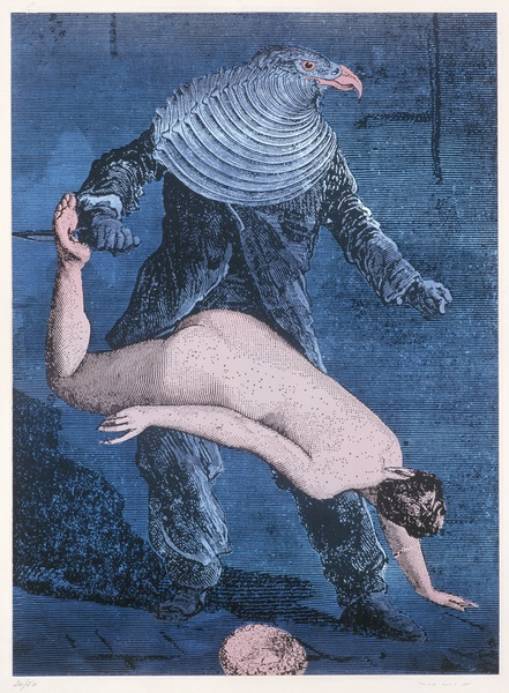
''His arm also covers the mother’s genitals and therefore blocks her sexual availability, as per oedipal prescription. Consider that the bird-child is facing and possibly moving (thrusting its neck) to the left, towards the sexual enticements of the mother, as is the father with his aggressive striding and simultaneously penetrating and covering gesture. Father and son compete here for access to the primal mother. This sexual combat, moving always left, is reinforced by the enigmatic figure in the distance, also facing left, holding or pushing an ambiguous object that can be read as phallic, pointing towards the mother-creature. This sexual geography combines with the literal westward mapping of the fascist reading to suggest a conflation of national and sexual destiny—a conquering fascist male; passive, yielding Paris to the left/west.''
Surrealism in general, was concerned with private fancies , may of them idiosyncratic. Sometimes we find something in a surrealistic picture that relates to our own innermost disquietude; sometimes we don’t. When we do, the picture takes hold of us and becomes a part of our own inner landscape forever. Max Ernst experienced his full share of the private fancies that powered surrealism in the 1920’s and 1930’s; some of them he turned into universal currency. Anyone who has known the breakup of a relationship will recognize for instance, the demon dance of what Max Ernst so ironically calls ”The Angel of the Hearth and Home” in a painting done in 1937. He also created a number of premonitory images in such paintings as ”Barbarians Marching Westwards” ( 1935) and ”Europe Under Rain” completed during World War II; the rain in question being a cataclysm that overtakes an entire civilization and leaves it to mold and rot away.
There is something very awesome about Max Ernst when he turned his mind to subject matter of this sort; his has been one of the most powerful imaginations to deal with the theme of Paradise Lost…..
”For me, two of the most pungent, original works of the 1920s — if one has to single out works that epitomize its contradictory artistic concerns — are Max Ernst’s Oedipus Rex (1922) and Otto Dix’s 1924 portfolio of 50 engravings dealing with War in all its stunning terror. On the one hand, we have a painting whose meaning is somewhat obscure — but not entirely, for Oedipus Rex is the hero of Sophocles’ tragedy — and on the other hand we have an avalanche of images whose meaning is horrifically clear….Ernst’s less immediately intelligible painting is also violent, as the pierced fingers and walnut indicate. The fingers are penetrated by a bow-like device used to puncture the feet of birds — there is one in the box — so that they cannot fly. Was it also used to shoot the arrow stuck in the walnut? The fingers do not bleed, but their wound must be painful. It is as though they stoically accept their suffering. Ernst’s violence is more subtle than Dix’s, just as his picture is more cryptic than the images in Dix’s series, but it is equally bitter and relentless. The sense of ruin is as irreparable as it is in Dix’s work, though more of a puzzle: A casual pinprick turns into permanent mutilation for no apparent reason. But the point is that a clever game has become self-destructive — masochistic as well as sadistic.” ( Donald Kuspit )
One may also recall that Sophocles’s Oedipus, who unwittingly killed his father and married his mother, and blinded himself out of guilt when he realized what he had done ; violated the prohibition against incest that is basic to society and sanity; gave his name to Sigmund Freud’s “Oedipus Complex.” Ernst’s picture stages the Complex, using a cast of strange symbols, each with many meanings. To understand the picture one must excavate layer upon layer of hidden meaning, the way Freud said one must excavate the unconscious to find the meanings hidden in the psyche.
This archaeological work gives rise to the idea of chance as a key element in Ernst’s collages. The collage is an arrangement of found objects, found meaning randomly collected, and then are assembled in a sort of “chance meeting” often in a strange sort of association that tends to represent the subconscious, which was a key part of many of Freud’s works. Ernst was a student of abnormal psychology from 1910 to 1914 at the University of Bonn and he has been noted as reading many of Freud’s works in Bonn during this time; the two most influential being Jokes and Their Relation to the Unconscious and The Interpretation of Dreams. Chance is actually a vehicle through which the unconscious mind can be explored and it also served as a way for the Ernst and other artists in the Dadaist and Surrealist movements to access forms and themes which would attempt to dissolve ties to the material, representative world of the old art.
Chance was expanded upon through a more conscious and intentional choice of violent confrontation. A common theme running through Ernst’s works is that of a polarization of meanings and objects and a condensation of meaning, which occurs through that process or polarizing. It is the association between the constructive and the destructive, the rational and irrational, the beautiful and the ugly, the dead and alive, sight and not seeing which defines the experience of the juxtaposition of Ernst. The juxtaposition of disparate images has an intense visual presence and influence in many of the collages. The association between objects like birds and people have a connotation that is not easily understandable, but at the same time is related enough to evoke emotions such as terror, disbelief, and confusion. These images also evoke an idea of the dream and the subconscious mind.
Condensation is a mechanism proposed by Freud by which condenses multiple words most of his work. Using condensation, Ernst took images that did not expressly belong together and he forced them into strange associations and juxtaposed them to bring new meanings to the materials and images involved, again with a selective use of what could be called distillation and synthesis.
Ernst’s more bizarre painting, of which ”Oedipus” is representative, certainly do not conform to ordinary standards of rationality.It is an unprocessed or, an artistically manufactured dream of Oedipus. “Each motif. . . sets up lines of association that all lead, ultimately, to different aspects of the oedipal predicament.” The picture is a riddle, resembling a rebus, the Sphinx’s riddle, the answer of which Oedipus correctly guessed to be “man,” ironically turns out to refer to Oedipus himself, as Elizabeth Legge points out, noting the narcissistic component of Ernst’s work. She notes the abundance of literary as well as personal references in Ernst’s painting, giving it a conceptual depth and richness. For example, the nut alludes to Hamlet’s statement “O God, I could be bounded in a nut-shell, and count myself a king of infinite space, were it not that I have bad dreams” (Hamlet, II.2.247). Hamlet is not only Oedipus’ social twin — equally royal (Freud notes that the infant acts in an “imperial” manner) — but his “psychological twin,” for he had similar unconscious incestuous wishes.
The bird refers to the pet cockatoo Ernst had when he was a child. It happened to die the same night his sister was born, confirming the treachery of woman and leading him to identify with his lost bird in the allegorical person of Loplop the Bird Superior, the omnipotent subject of many paintings. Thus Oedipus Rex is also Ernst’s self-portrait, that is, a portrait of the Oedipal child in Ernst’s psyche — the child that remains alive in his unconscious and whose conflicts he has encoded in his dream picture. It is also necessarily a portrait of the Oedipal child in every person, for the complex is universal.
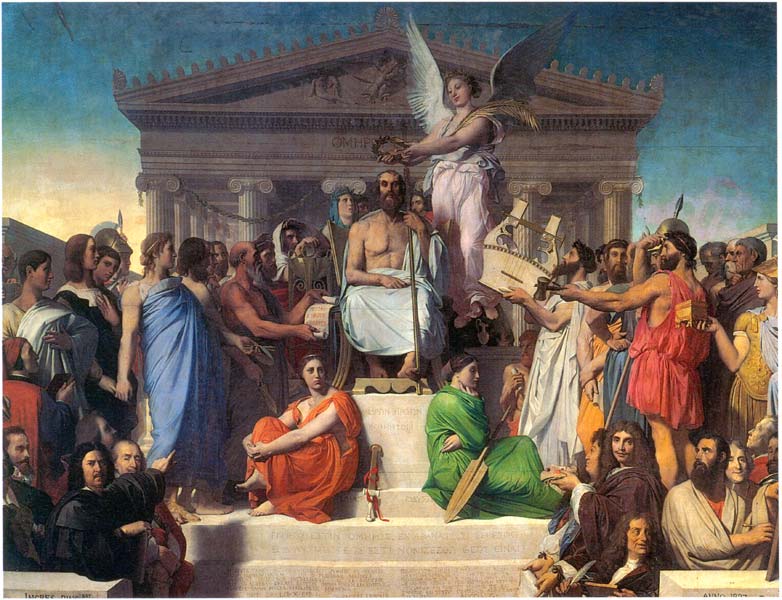
''Jean-Auguste-Dominique Ingres (pronounced: aah-n Gr-ah) was David’s most famous student. And while this prolific and successful artist was indebted to his teacher, Ingres quickly turned away from him. For his inspiration, Ingres, like David in his youth, rejected the accepted formulas of his day and sought instead to learn directly from the ancient Greek as well as the Italian Renaissance interpretation of this antique ideal. In 1827, Ingres exhibited Apotheosis of Homer ''
Legge concludes by noting that Ernst’s uncanny work is not only an “enactment of Freudian descriptions of the dream mechanism” — it certainly involves displacement and condensation — but becomes a “picture-manifesto dealing with image-creation itself.” It was born of “the uterus of methodical madness” that Ernst regarded as the unfailing source of creativity, and is itself a visual statement in which Ernst feigns madness, the way Hamlet did in one of his speeches (II.2.247). The picture is as absurd and mad as a dream’s manifest content, to use Freud’s language, the latent content of which is a forbidden but quite natural wish. The punishment for this wish is castration, which is what both Oedipus’s blindness and Ernst’s bird-clipper symbolize. This is a very bad dream indeed — an arrow shot through one’s brain, as it were (the walnut is also a symbol of the brain, for its irregular surface resembles that of the brain). Ernst’s painting is a private dream that mocks the spectator with its incomprehensibility and incoherence, even as it tantalizes him with hidden meanings that imply it could be his own.
”But even as he deceived himself by intellectualizing his art as offering insight into his life-world, he acknowledged that the automatist process was not altogether impersonal. It began “with a memory of childhood” which had become an “obsession.” The private importance of the automatist process of artistic free association was that it “revealed the first cause of the obsession, or produced a simulacrum of that cause.” In other words, its purpose was therapeutic. Ernst was not indulging in it only for artistic reasons, but to save himself. It was not simply an artistic lark, but a way of psychoanalyzing himself. Ernst, it seemed, had wanted to be a psychiatrist before the war broke his spirit; afterwards he used his psychoanalytic art and knowledge to restore his mental health. The times couldn’t be cured, but the self could be. The spell of the obsession was lifted when it was represented in the simulacrum of the hypnogogic vision. But a problem remained: Ernst didn’t want to give up his hypnagogic visions, for to do so would be to give up being an artist. He had to stay obsessed, which eventually led him to become repetitive. His later hypnogogic visions became tedious and predictable, however variable their detail. “I have seen. And I was surprised and enamored of what I saw, wishing to identify myself with it.” Doing so, he turned Surrealist magic, and with it frottage and automatism, into cliché, no longer capable of intensifying the mind’s “irritability.” ( Kuspit )
Any conclusion cannot avoid supporting the thesis of Ernst’s works being intensely psychological in their basis and content and the idea that Freudian psychology was a strong, and likely central base for Ernst in his use of collage and of art in general. It was this exploration by Ernst of sexuality in late Dada and Early Surrealism that would lead to some of the intensely perverse, deviant images created later, such as the mannequins of Man Ray and the doll’s Balmer along with so many of the paintings done by artists such as Dali.
Ernst laid the basis for these later developments with his explorations in chance, the subconscious, and condensation joined with juxtaposition as well as with his use of sexuality and gender within a framework of Freud. His collages, which were his attempt at abandoning the traditionally artist creation and his work with found images, always working to keep their unique meaning would later be highly influential and today seen in the literary technique of a Paul Auster.


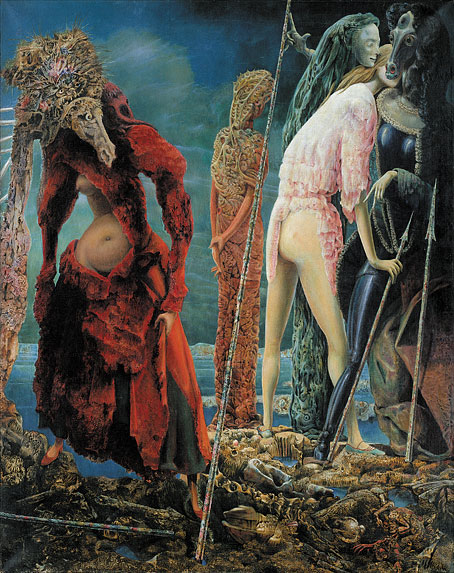
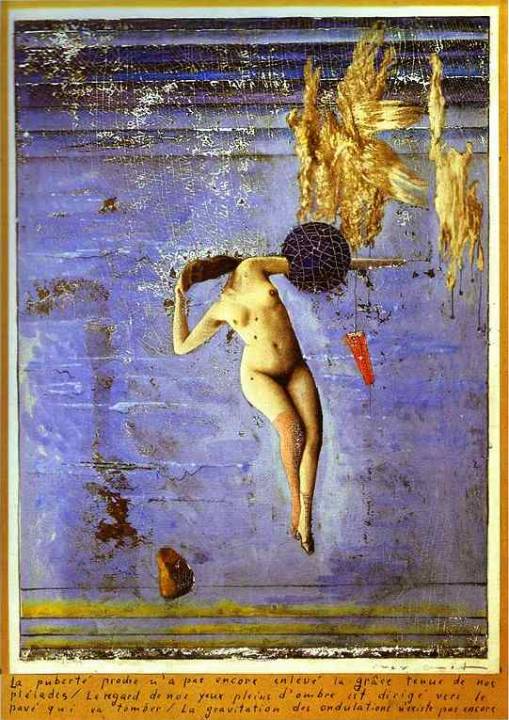
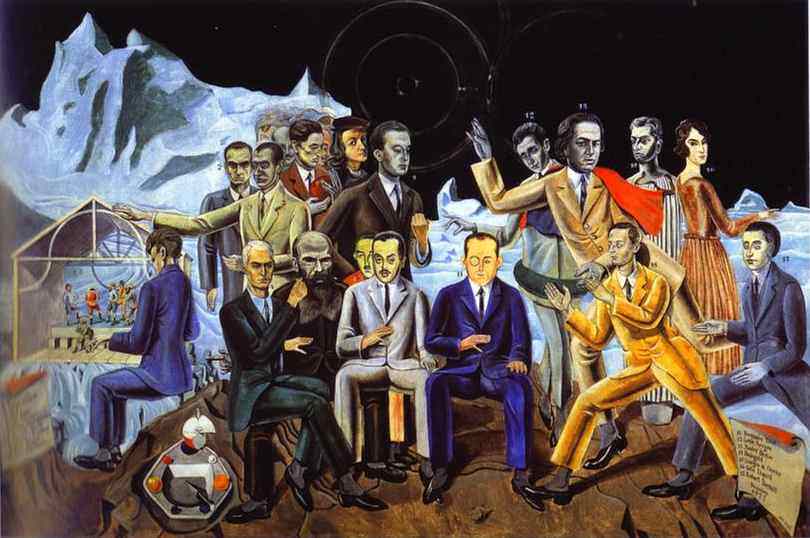
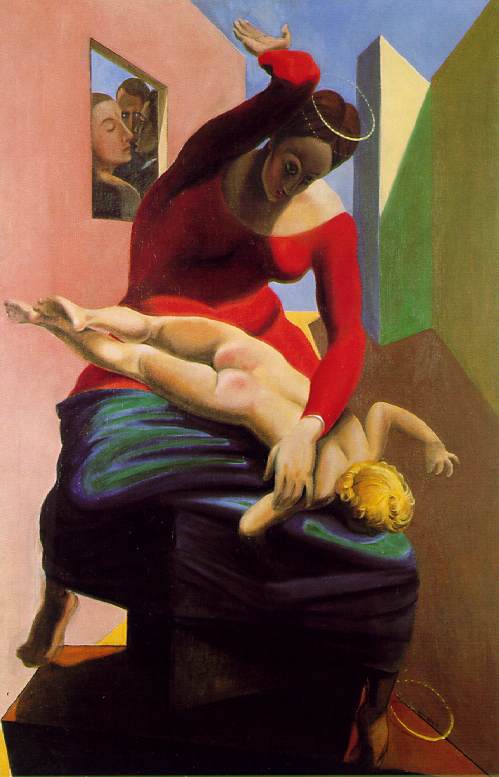
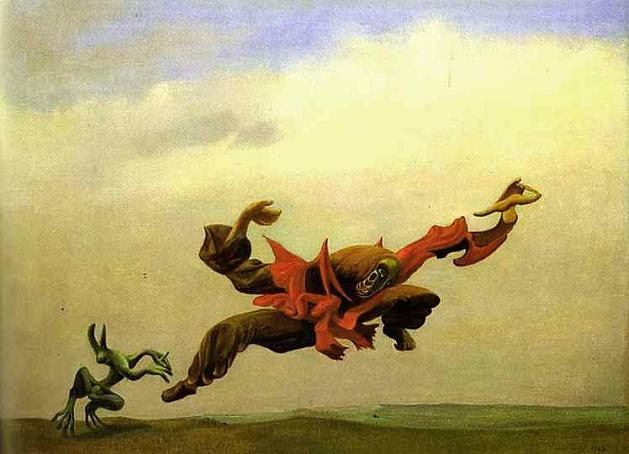
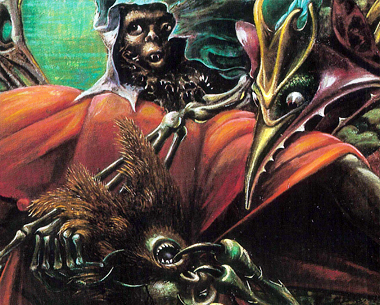
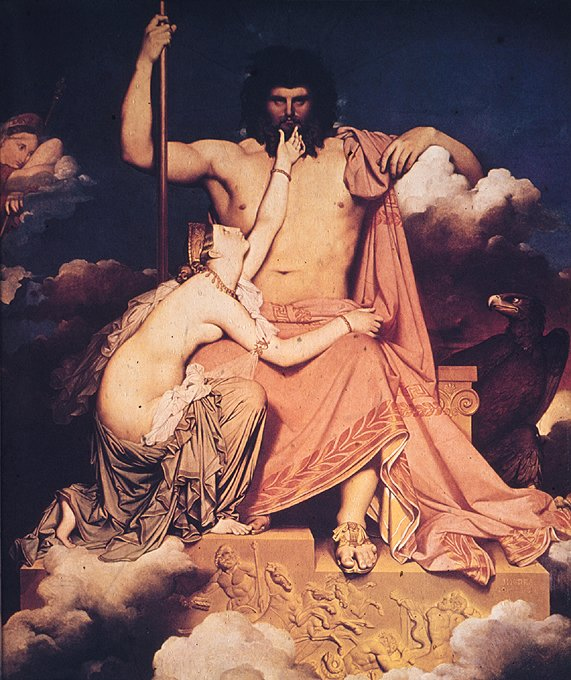



 COMMENTS
COMMENTS